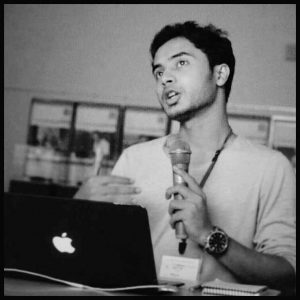REGENERATION
Jurors

Mohammad Tahajibul Hossain
Assistant Professor, BUET

Maherul Kader Prince
Assistant Professor, BUET
Winner
Cai Whenzhou
Li Ruoxi
from Huazhong University of Science and Technolology, China
Wuhan was an industrial city from 1890-1980, and there are a lot of abandoned marvelous industrial sites remaining in this city. The Wuhan Steel Factory built in the 1950s is one of them. Every abandoned factory has a chance to be renovated and reused in the current society, and we've found out that the very thing that is urging changes in Wuhan Steel Factory is its previous discipline effect towards the workers and its order deeply rooted in the materiality of the factory. In this project we tried to keep its manufacturing function while replacing the product from steel to digital publications. Other than implanting a new digital-manufacturing program in this factory, we also opened up the factory to the public by introducing urban functions such as cafe and book shops in the architecture. Last, but not least, to break the previous spatial order, we implanted a ramp that connects very valuable spaces in this factory with our newly built exhibition spaces, hoping to create a diverse atmosphere.
Text Description from Participants
First Runner-Up
Jaime Yin Ching Chan
from University of California Berkeley, USA
How can the notion of palimpsest be integrated into the practice of retrofitting to reveal the layers of time embedded, evoke new meanings, and contribute a sense of depth to the contemporary world? Palimpsest is more than just a reminder of the past. With layers rewriting through acts of peeling and overlapping, it is the synthesis of the past, present, AND future. With this quality echoing with architecture being a collage of time, this proposal studies the possibility of architecture being the active palimpsest that brings contemporary reinterpretation to the city through the integration and collision of old & new layers. The Geneva Powerhouse & Car Barn is chosen as the site for its richness in history since the 1850s as one of the last reminders of the electric car history in San Francisco. In 2016, the Powerhouse became a Community Center. Yet, with the lack of funding and COVID, the half-completed building sitting on the once-flourishing transportation hub has its future yet to be determined. Through the narratives built along 4-time scenarios, it is hoped that the introduction of new and imaginative events can rejuvenate the building with new identities and reveal the interminability in architecture across time.
Text Description from Participants
Second Runner-Up
Rowan Elselmy
from Arab Academy for Science and Technology and maritime Transport, Egypt
How can a building existing around the forefront of technology also become rooted in the history of the surrounding context? Modern art, in a sense, is a feedback loop that binds history and culture together and manifests within the physical environment so that people living members of Alexandria's urban society - can interpret it. The Digital Arts and Technology Park is an entity that brings arts, heritage, digital experiences and learning together under one roof. That leads to the following question: Where should digital art be presented? We believe it should become a place merging the analog with the virtual, a place allowing for constant redefinition of how digital can interact with the physical. By not replicating the typology of a typical art center, a flexible open source experiencing of the art is provided. Revival of Nouzha garden by implementing interactive installations focusing on highlighting Alexandria's rich cultural heritage that was visible in the selected site. Adaptive reuse of Casino de Nouzha as part of the experience showcasing cosmopolitan Alexandria. Taking over the abandoned Nouzha Casino, once famous for the parties and retrofitting it to create a versatile Art center, whilst blurring the lines between architecture and landscape.
Text Description from Participants
People's Choice
Moontaha Noor &
Arghya Roy
from Hasan Rahman and Associates, Bangladesh
Barabazar was famous for twelve bazars or it was named after twelve Auliya. Barabazar, an archaeological site, is located 11 kilometers to the south of Kaliganj upazila in Jhenaidah district. It has a rich history, including that of Bara Awliya. Khan Jahan Ali, Gazi Kalu Champabati, as well as many famous mosques of Sultanate period. Here we find that it is not popular as a tourism site. Scattered spots and hardly accessibilities cause low Tourist Attractions. As a result hardly tourists come here. No tourist cause no tourism generated income source. These sites are not generating income for villagers so they are not interested in conservation the Heritage Sites. Here if we can connect all the sites with a TRAIL, Tourists or Visitors will find Baro Bazar as an attractive Heritage Site. For different types of tourists we can create different options like single or multiple day route, 6 hour route. Tourists can find their most suitable trail for the certain visit. When tourists will come to barobazar more frequently, automatically tourists facilities will grow up. and local people would be benefited by tourism generated incomes. Then they will come forward to conserve the heritage sites for their own sake.
Text Description from Participants




















































